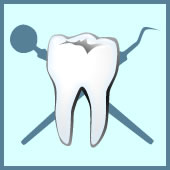The objective of cosmetic dentistry, which is elective dental work, is to improve the appearance of the teeth and to enhance one’s smile. Cosmetic dentistry does not contribute to the health of the teeth.
The art and science of dentistry has made advances such that one need not remain resigned to stained or chipped teeth. There are several cosmetic techniques available that allow one to correct dental anomalies that can impair appearance.
In India cost of cosmetic designing of teeth is much lower than other countries. Most of the dental patients all over the world making their first preference to design their smile in India at lower cost.
I am not comparing rates of treatment with other countries. But this will just show the average cost of the cosmetic dentistry in India.
Bleaching
The process of bleaching or tooth whitening helps to brighten teeth that become dark with age or get stained due to smoking, tea/coffee drinking, tobacco chewing etc. Bleaching removes extrinsic as well as intrinsic stains. The process, which can be carried out once every three years, is carried out largely by using hydrogen peroxide solution and also sometimes by carbamide peroxide. Bleaching can whiten teeth by up to 5 times the original shade. A bleaching tooth tray that carries the peroxide solution can cost between 1000 to 1500 INR( i.e. apxly 20$ to 30 $).
Bonding
The appearance of teeth that have spaces in between or are cracked and chipped can be improved by the bonding process in which a hard, sterile, and inert tooth-colored plastic is affixed to the teeth.The bonding process takes 10-15 minutes for a tooth and can cost around $ 5 to $ 15 for a tooth. The bonded restoration stains similar to natural teeth.
Porcelain Veneers
These are extremely thin shells used to cover the front side of the teeth. Porcelain veneers are more resistant to stains and chipping as compared to bonding. They are bonded to the teeth using a special bonding material and can be used to alter the appearance of teeth, provide fullness to the upper lips, and fill gaps between teeth. Veneer on a single tooth can cost up to $ 40 to $ 50. As compared to the application of crowns or caps, teeth are ground to a lesser extent during veneer treatment.
Orthodontics and periodontics
Orthodontics deals with the prevention and treatment of dental and facial irregularities. Braces are used in orthodontics for the treatment of crooked teeth, protruding teeth, widely spaced teeth, an underbite, etc. Metal braces made from titanium are expensive and need to be worn for 2-3 years the cost of orthodontic treatment for labial brackets ranges from $ 300 to $ 400. Periodontics helps individuals to enhance their smile by altering the contours of the gums, it is a simple surgical process accomplished using laser and can cost up to $ 50 to $ 60.
Porcelain Crowns
Porcelain crowns are used for broken teeth, teeth with silver filling or those with excessive decay, and also teeth that have undergone root canal treatment. Crowns can be matched to tooth color. Cost for a single ceramic crown ranges from $ 25 to $ 35.


